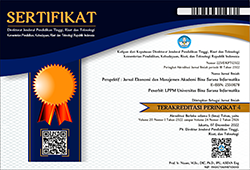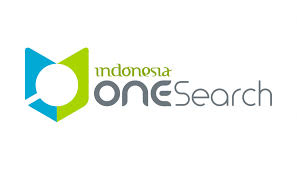Endogenous Modeling of the Effect of Gender Development on Poverty in Indonesia in 2021
Abstract
Full Text:
PDFReferences
Baum, C. F., Schaffer, M. E., & Stillman, S. (2003). Instrumental variables and GMM: Estimation and testing. Stata Journal, 3, 13–31.
Caesaktiti, W. H. A., Rusdarti, R., & Oktavilia, S. (2021). Peran Gender gap Memoderasi Rasio Ketergantungan, PDRB, Belanja Publik Terhadap IPM Jawa Tengah 2016-2020. Business and Economic Analysis Journal, 1(2), 122–133. https://journal.unnes.ac.id/nju/index.php/beaj/article/view/33591
Dijkstra, A. G. (2017). The Effect of Women’s Economic Power in Society on Gender Inequality. World Development, 91, 178–192.
Hausman, J. A. (1978). Specification tests in econometrics. Econometrica, 46, 1251–1271.
Ibrahim, S., & Alkire, S. (2007). Agency and Empowerment: A Proposal for Internationally Comparable Indicators. Oxford Development Studies, 35(4), 379–403.
Mustika, C. (2011). PENGARUH PDB DAN JUMLAH PENDUDUK TERHADAP KEMISKINAN DI INDONESIA PERIODE 1990-2008. Jurnal Paradigma Ekonomika, 1(4), 12–23.
Padang, Mariaty, D., Anis, A., & Ariusni. (2019). Analisis Pengaruh Kesetaraan Gender Terhadap Pertumbuhan Ekonomi Di Sumatera Barat. Jurnal Kajian Ekonomi Dan Pembangunan, 1(3), 69–76.
Pradhan, M. (2018). Gender Development and Poverty in Indonesia. Jurnal Ekonomi Dan Studi Pembangunan, 19(2), 115–130.
Sargan, J. D. (1958). The estimation of economic relationships using instrumental variables. Econometrica, 26, 393–415.
Stock, J. H., Wright, J. H., & Yogo., M. (2002). A survey of weak instruments and weak identification in generalized method of moments. Journal of Business and Economic Statistics, 20, 518–529.
Sumarto, S., Suryahadi, A., & Widyanti, W. (2018). PDRB dan Kemiskinan di Indonesia: Analisis Spasial di Tingkat Kabupaten/Kota. Jurnal Ekonomi Dan Pembangunan Indonesia, 19(2), 138–155.
Suryahadi, A., & Widyanti, W. (2020). PDRB, Ketenagakerjaan, dan Kemiskinan di Indonesia. Jurnal Ekonomi Pembangunan, 21(2), 137–152.
Walpole, R. E. (2012). Probability & Statistics for Engineers & Scientists. Pearson.
World Bank. (2019). Gender Equality and Poverty in Indonesia
DOI: https://doi.org/10.31294/jp.v21i2.16797
Copyright (c) 2023 Pardomuan Robinson Sihombing, Nurhidayati Nurhidayati, Dyah Purwanti, Sigit Budiantono, Ade Marsinta Arsani

This work is licensed under a Creative Commons Attribution-ShareAlike 4.0 International License.
dipublikasikan oleh LPPM Universitas Bina Sarana Informatika Jakarta
Jl. Kramat Raya No.98, Kwitang, Kec. Senen, Kota Jakarta Pusat, DKI Jakarta 10450

This work is licensed under a Creative Commons Attribution-ShareAlike 4.0 International License









